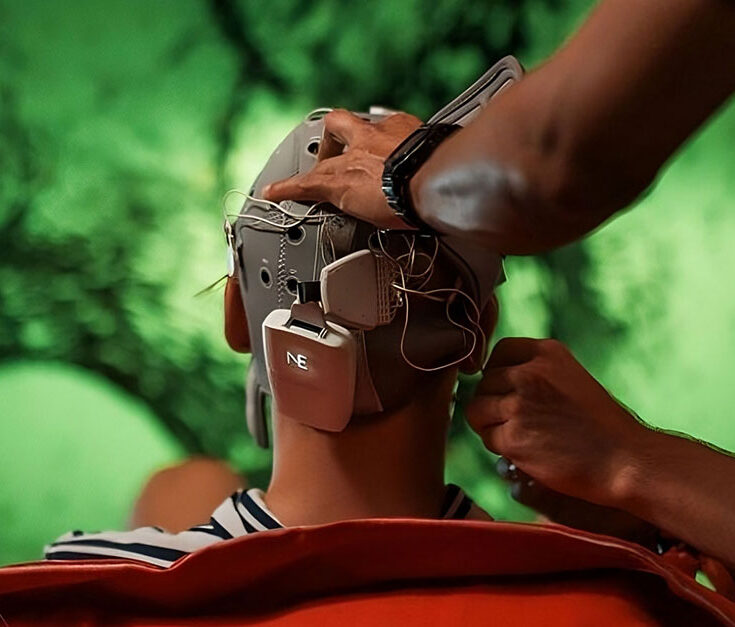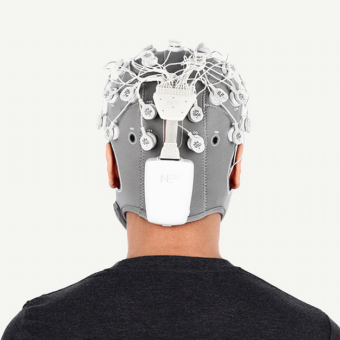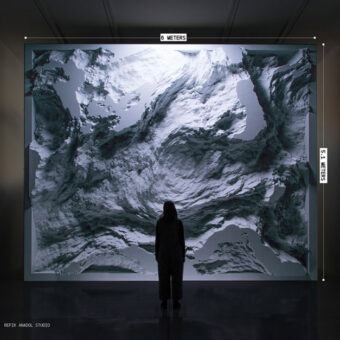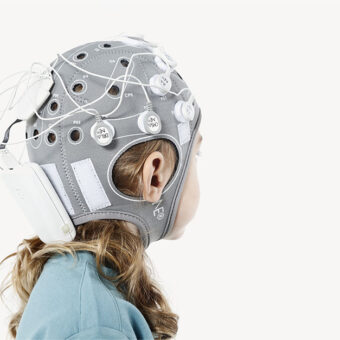In today’s rapidly evolving world, where emotions run high and our innermost thoughts can often be challenging to express, a remarkable trend has emerged: the use of EEG technology to create art. EEG, short for electroencephalogram, is a technology that detects electrical activity in the brain. It has found its way into the hands of artists who seek to tap into the depths of human consciousness and translating it into captivating artworks. In this article, we’ll explore how artists have harnessed this technology to give us a unique glimpse into the human psyche.
How Does EEG Work in Arts?
While EEG is primarily used in clinical and research settings to study brain function and diagnose neurological conditions, it can also be incorporated into artistic endeavors as a form of interactive or generative art. Here’s how EEG can be applied in the context of arts:
Brainwave Visualization
Artists depict real-time brainwave activity through various visual representations, creating dynamic and responsive depictions of mental states. Among them, Luciana Haill stands out by utilizing EEG as a creative medium to explore pre-sleep brain activity, offering a unique perspective on consciousness.
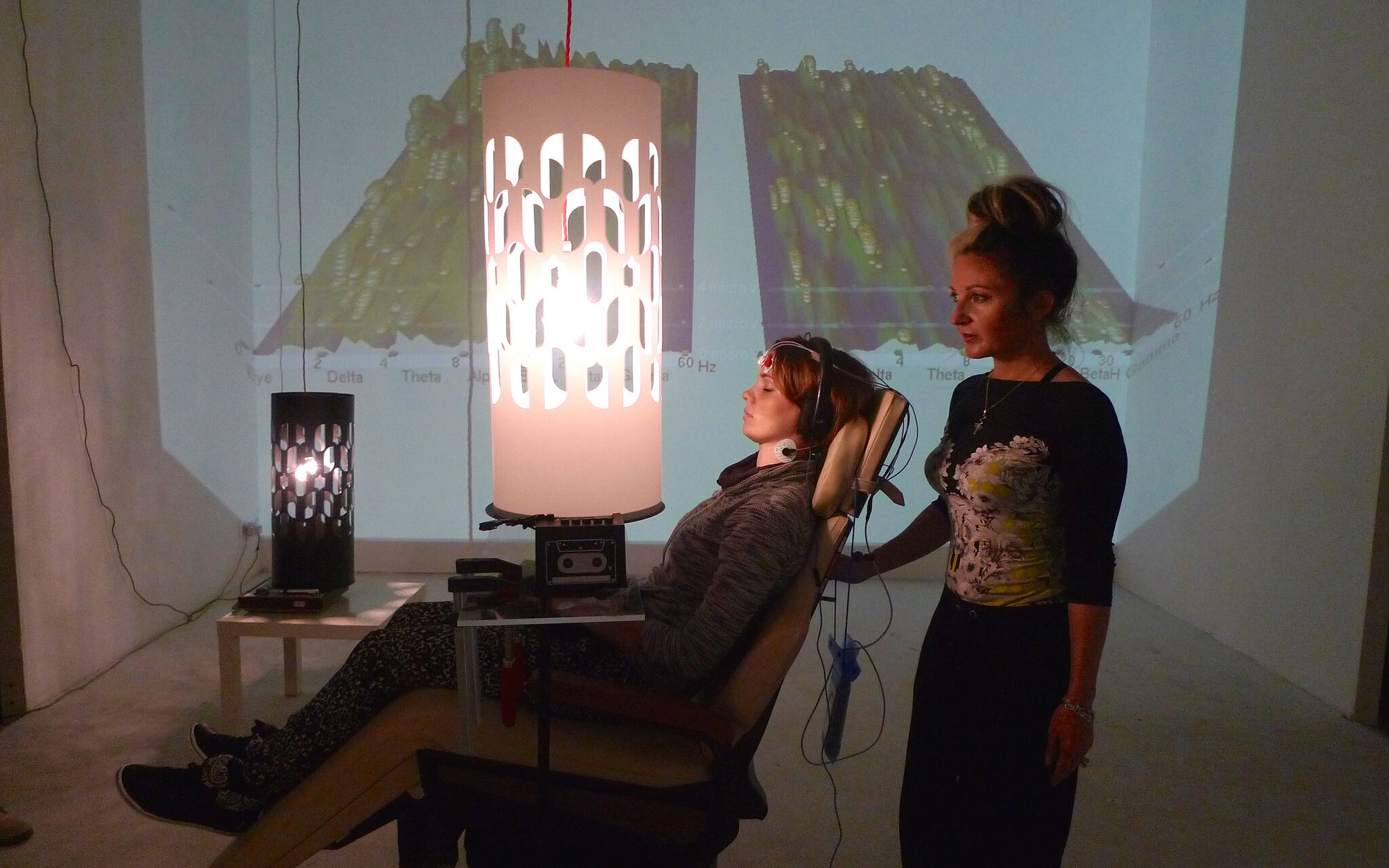
Interactive Installations
EEG integrates into interactive art installations, such as those by Lia Chavez, where audience brain activity directly influences visual or auditory components, altering colors, shapes, or sounds. Specifically, Chavez’s installation translates EEG data into sound and light, which offers an immersive exploration of the art-science connection.
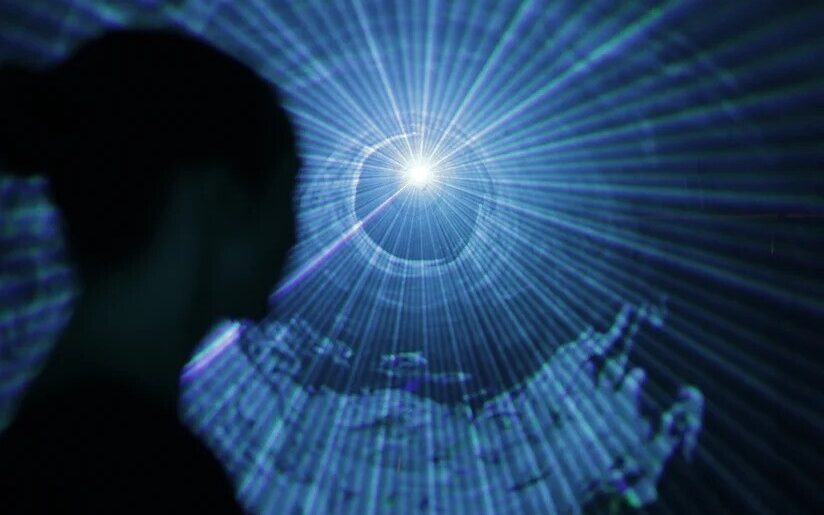
Brain-Computer Interfaces (BCIs)
EEG powers brain-computer interfaces, translating brain signals into control signals for artistic expression in music, visual arts, or performance. A clear example of this is the ENAKD project, unveiled at Sónar+D event in Barcelona, which showed EEG’s potential in art. In collaboration with our sister company Starlab, Enobio was used to record EEG data to interpret emotions like Valence and Arousal. Leveraging ChatGPT, we transformed these emotions into images and haikus, introducing a new avenue for emotional expression through art.
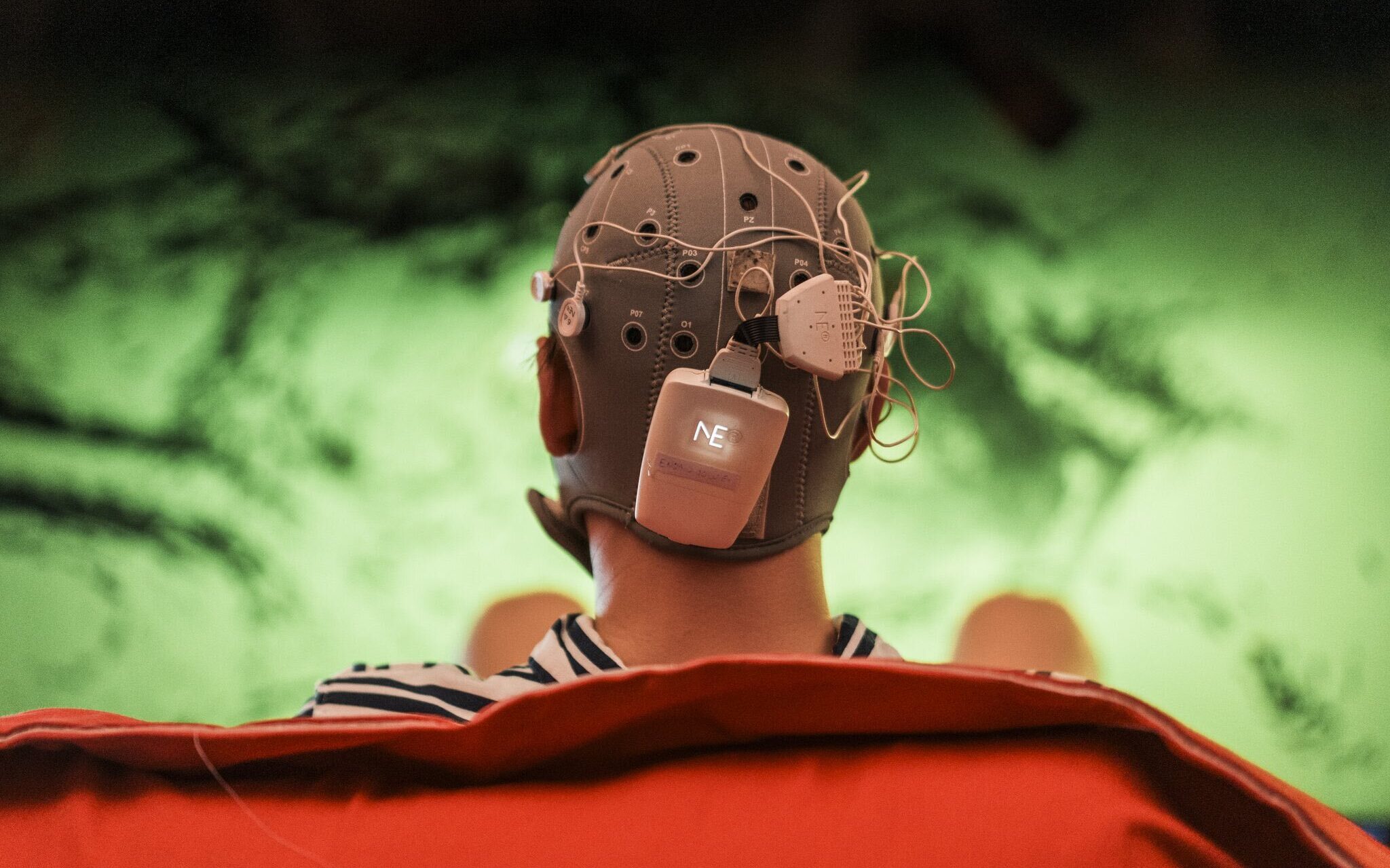
Neurofeedback Art
Real-time brain activity information allows participants to consciously influence their brainwaves, creating installations where individuals modify brain activity for specific effects. Refik Anadol used our Enobio EEG system in projects like “Melting Memories” where his team transforms EEG data into dynamic visual art, showcasing cognitive control and memories through data paintings and sculptures. This innovative work, blending art and neuroscience, is only the beginning of his exploration into new artistic frontiers with Enobio.
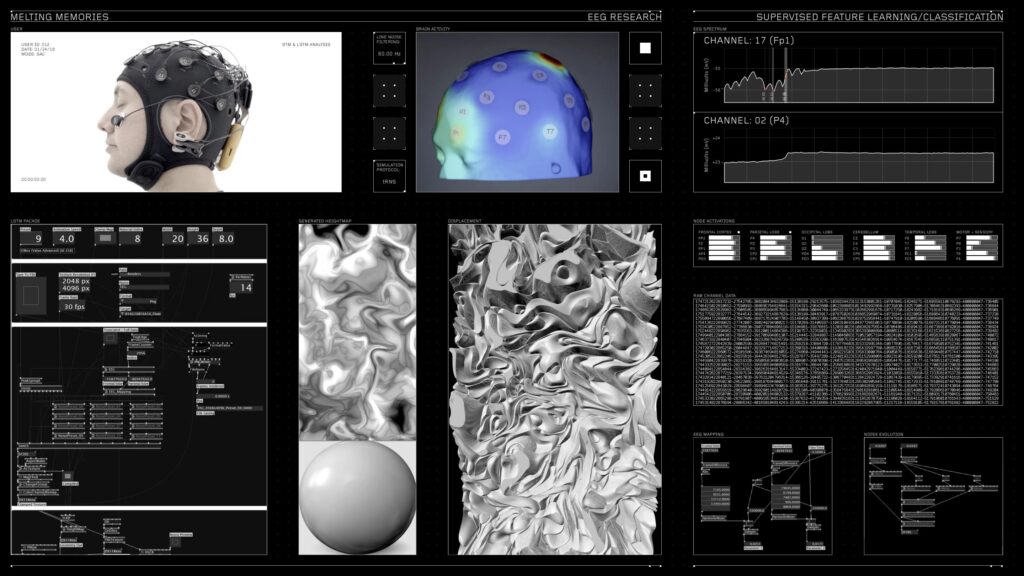
Emotional Expression
EEG measures emotional responses, shaping art that reflects or responds to individual emotional states for personalized and immersive experiences. A prime example is the collaboration between Saatchi & Saatchi Wellness and Random Quark, transforming EEG data into digital paintings, and showcasing the convergence of technology and emotion.
Collaborative Art Projects
EEG connects the brain activity of multiple individuals for collaborative art, using collective brainwave data to create pieces reflecting shared mental states or interactions. Suzanne Dikker and Matthias Oostrik‘s Mutual Waves Machine is a notable example. They explore the synchronization of brainwaves between two individuals to provide insights into human interaction and neural connectivity. These examples underscore the diverse intersections of art and EEG technology.
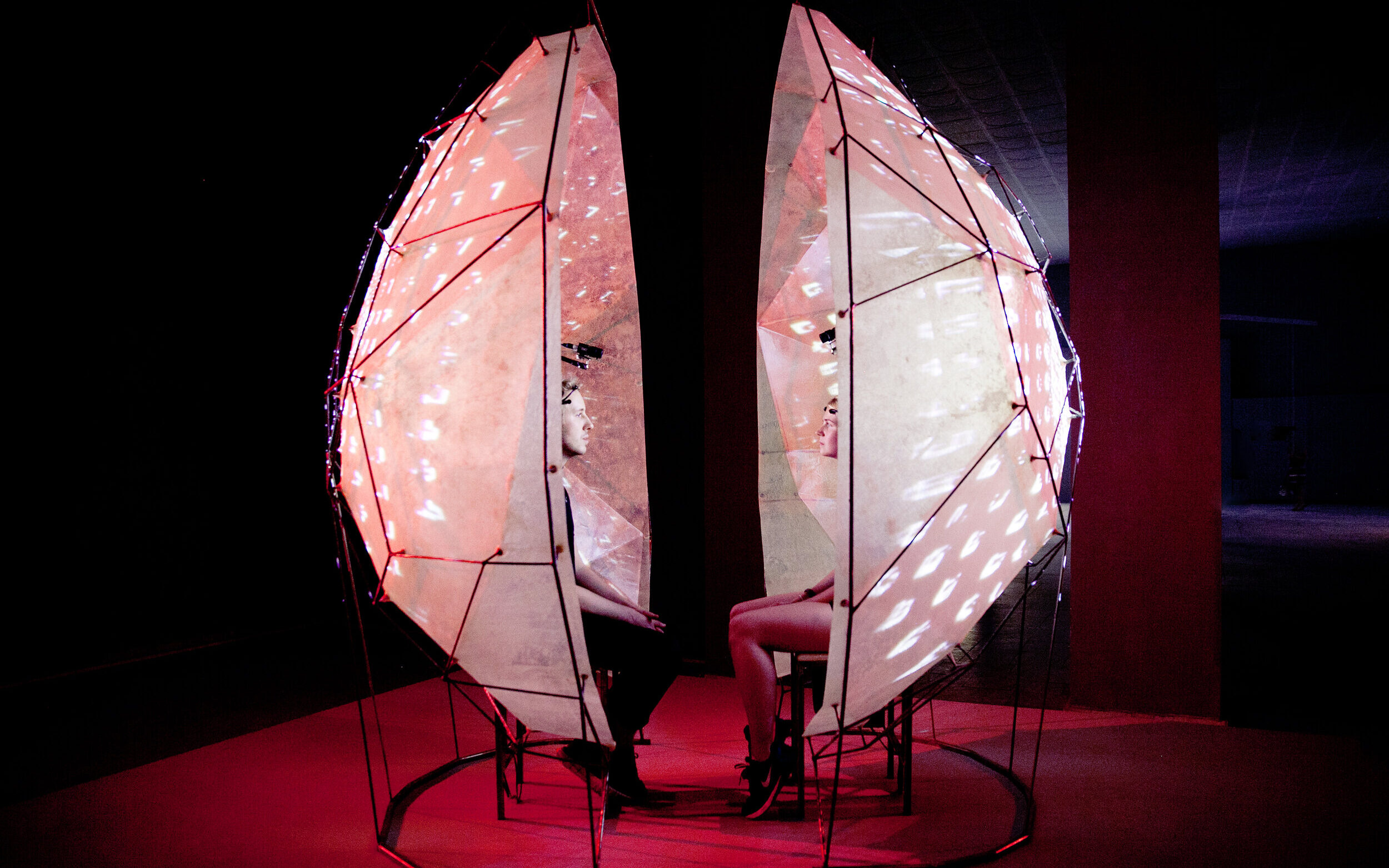
The Expanding EEG Art Ecosystem
The integration of EEG technology into art not only offers innovative ways to express emotions but also presents new challenges. Successful communication remains a crucial aspect, especially in an increasingly automated world. Saatchi & Saatchi Wellness plans to partner with Goldsmith’s University and IBM Watson to develop an algorithm that translates live tweets into art, reflecting the collective emotional state of the world. This real-time visualization of global emotions showcases the evolving relationship between technology, art, and human emotions.
The Future of EEG Art
As technology continues to advance, the possibilities for EEG art are limitless. Artists and scientists are pushing the boundaries of what’s possible. Using EEG, they reveal the hidden depths of the human mind. EEG technology could potentially enable computers to understand human emotions better, leading to more adaptive and empathetic interactions.
